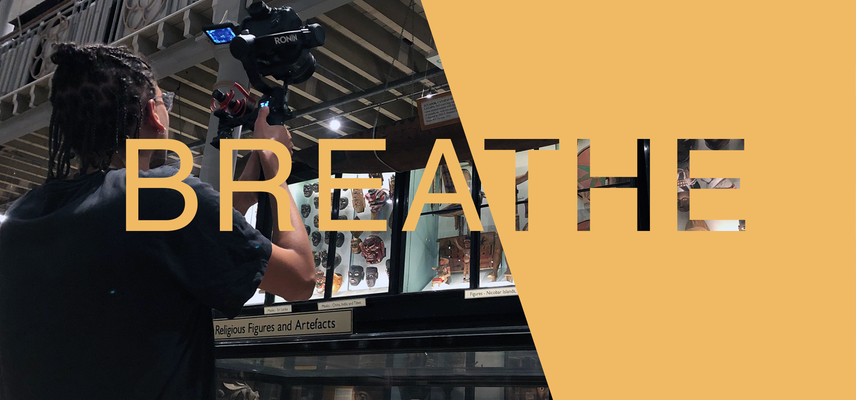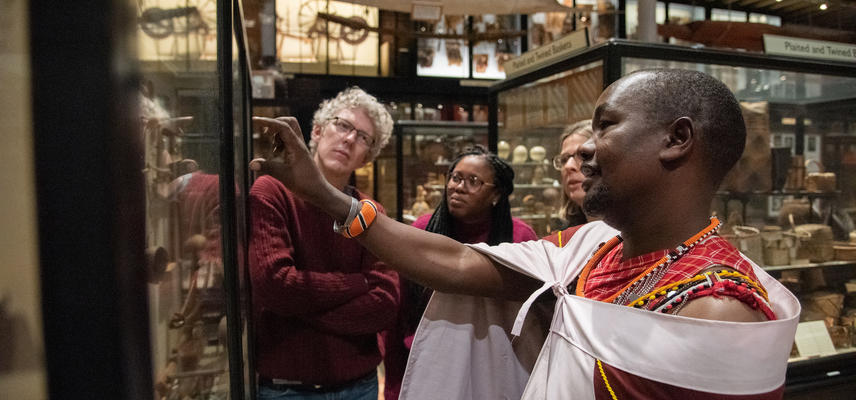Maasai Living Cultures Educational Films
Maasai People’s Traditional Ways of Life
Find out about Maasai traditional ways of life in Kenya and Tanzania by watching these films produced by community members.
Maasai people tell their own story of who they are as a living culture today in these self-represented resources.
These videos have been produced as part of a wider project with InsightShare, Maasai community members and the Pitt Rivers Museum, which you can read more about on the Living Cultures project page. In the summer of 2023 members of the museum and InsightShare took part in traditional Maasai healing ceremonies. These videos featured here are also part of this wider project aim to work towards healing and building positive relationships to deepen cross-cultural understanding with collections at the museum.
https://www.youtube.com/embed/wyKKyi90gzM
Ormarei – the Family
Hear from Maasai individuals and find our more about their daily routines and responsibilities as part of the Maasai family.
Sintamei Kilusu introduces the film to explain that the Indigenous Maasai family is organised collectively, the family is a community. How does family as shown in this film compare with your own experience of family?
The Maasai Ecology
Hear directly from Maasai community members about their connection to their local environment and the impacts of climate change and changing access to their traditional lands.
The Maasai live a pastoralist lifestyle in harmony with the land. As Indigenous communities that remain inextricably tied to and deeply connected to their environment and ecosystems, the Maasai are experiencing a rapidly changing environment in the face of climate change, including drought leading to the death of wild animals and livestock. This film also highlights specific challenges they face with local governments promoting business interests on the land and its resources, sometimes in the name of conservation but without acknowledging the long term care and custodianship of the land by the Maasai. Land has been fenced off restricting access to grazing areas and other natural resources, and people have been evicted from traditional land, stopping both their traditional lifestyles as well as reducing opportunities for the traditional care for the land.
Orkurro and Enkukuo – Games.
Take a look at how traditional Maasai games are passed on from generation to generation, supporting the education of young people and the nurturing of Maasai community values.
Find out about the game Orkurro played with small stones and the game Enkukuo where players compete to get cows. Both games connect the players with their local environment and pastoral way of life.
Enkila oontalengo – Ceremonial robe.
Find out about the importance of this ceremonial robe in Maasai culture and how it is made by women skilled in beadwork.
The Enkila, the ceremonial robe, is a necessary part of some of the most important Maasai occasions. From its use in important ceremonial practices, and the traditional knowledge of its creation held and passed on by Maasai women, the sharing of this story is a priority for Maasai.
Enkukuri – Calabash
Watch this film to find our how the Enkukuri, or the calabash, is a fruit that plays a central role in Maasai culture.
The Enkukuri is a natural material taken from and eventually given back to the land. Here you can watch the practical preparation of calabash for the purpose of storing milk, including how it is grown from seed. The spiritual significance of several different calabash used for important ceremonies with their decorative beadwork also described. The many different uses of the Enkukuri are important to understand for the continuation of Maasai culture.
Enkorrkor/Emaitai – Cowbell
Discover the importance of the cowbell in Maasai culture
Within this film we hear the Maasai explain not only how the cowbell is instrumental in communicating with the animals that live alongside the Maasai, but also how the creation of the Emaitai (the cowbell) is just one example of how the Maasai live as part of nature by producing materials from the environment around them. The relationship between the Maasai and the land is symbiotic.
Fire Package – Learn about the significance of fire in the Maasai community
Fire has always been an integral part of Maasai culture, with many ceremonies and practices depending on the inclusion of fire in one way or another. Listen to Samwel Nangiria, Indigenous Maasai activist, and other Maasai community members as they explain just how important fire is to Maasai culture.
View the full playlist on YouTube
How can teachers use these films?
Share the films with students to find out more about:
- Maasai culture
- Everyday pastoral life
- Environmental concerns and impact of climate change
- Role of women as cultural custodians
- Self-representation – What are the benefits of having the films made by Maasai people? What else do you want to know? What does this reveal about you?
Who made the films?
The films were produced by the video collective Oltoilo le Maa Kenya (Voice of Maasai Kenya), Oltoilo le Maa Tanzania (Voice of Maasai Tanzania) and Maasai Treasures, an organisation supporting women through the craft of beadwork in Kenya. The films were created in partnership with the Pitt Rivers Museum as part of a project generously funded by the Staples Trust called Living Cultures: Indigenous Voices at the Pitt Rivers.
Why were the films made?
The films were produced as part of the ongoing Maasai Living Cultures project.
After visiting the Pitt Rivers Museum in 2017 and 2018, Maasai delegates felt compelled to address the issue of museums containing objects of great cultural or spiritual value that were collected from Indigenous communities under the violence of colonialism. Upon returning home and communicating this discovery with Maasai communities in East Afrika, a complex process was subsequently triggered by the Maasai, supported by the Pitt Rivers Museum, to begin rectifying these historical inaccuracies and sensitivities. Maasai families and wider communities initiated discussions amongst themselves, their ancestors and spirits, and dialogue continued between the PRM and the Maasai. Subsequent funding enabled these films to be produced as part of a set of learning resources at the Pitt Rivers, and one way to begin repairing relationships between the Maasai and the descendants of those responsible for violence inflicted on Maasai communities. Within these participatory videos, the Maasai are able to speak authentically, telling their own truths and stories in order to present their living culture.
Over the years since this initial visit of the Maasai delegation to the Pitt Rivers Museum, a new regional network has emerged in Kenya and Tanzania, the Pan-African Living Cultures Alliance, enabling more communities to document, through the use of participatory video, their knowledge systems, cultural systems, crafts, languages and traditional technologies.






